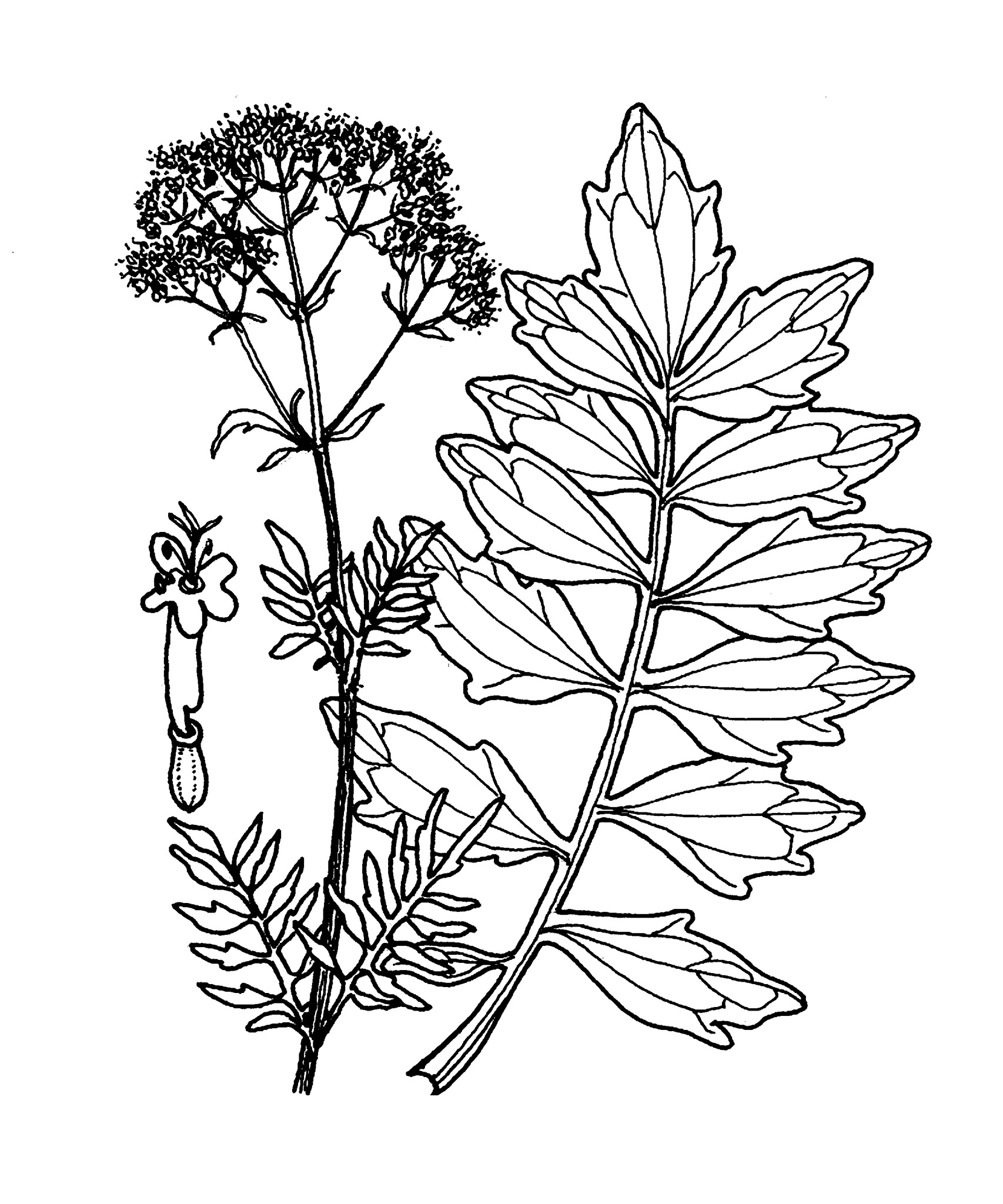
An old name, perhaps derived from valere — to be healthy, referring to the medicinal properties.
Erect, rhizomatous, perennial herbs, subshrubs or shrubs. Leaves simple, opposite, divided into segments 1-3 times. Flower clusters mostly branched. Flowers unisexual or bisexual. Calyx with 5-15 linear, inward-pointing teeth that are feathered on the fruit. Corolla wheel-like, with (3)5 unequal lobes, the tube funnel-shaped and slightly swollen near the base. Stamens 3, the stigma 3-branched. Ovary inferior. Fruit a flattened, 1-seeded achene.
The only species much cultivated is V. officinalis, grown in herb gardens and occasionally in informal herbaceous borders.
Seeds or division.
See V. officinalis.
Leaves divided into paired lobes.
About 270 northern temperate species, with a few from S Africa and the S American Andes.
Source: (2002). Valerianaceae. In: . Horticultural Flora of South-eastern Australia. Volume 4. Flowering plants. Dicotyledons. Part 3. The identification of garden and cultivated plants. University of New South Wales Press.
